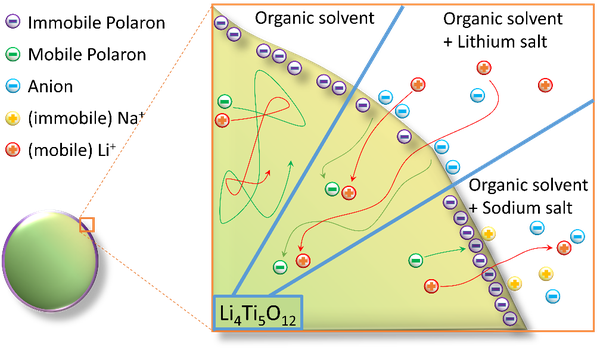Nuclear Magnetic Resonance
In nuclear magnetic resonance (NMR), the coupling of the spins of atomic nuclei to an external magnetic field is used, for example, to obtain structural or dynamic information about materials or systems with atomistic resolution. It has been shown that in operando studies, in which the materials are characterized under working conditions, can provide unique insights into how they work. Most of the systems we study are electrochemical in nature. This particularly includes energy storage in batteries or catalytic energy conversion in electrolysers. We are developing new methods, which primarily involve hardware and software development, in order to be able to examine these systems. Our goal is to clarify the intrinsic properties of the materials and systems examined in order to be able to provide suggestions for improvements in synthesis, processing or application.
In operando NMR
Batteries and electrolysis setups are complex systems in which various liquid or solid substances are connected to each other and influence each other. Two-phase experiments are therefore the first step in deciphering processes and chemical mechanisms that occur in real systems. We are therefore investigating whether there are chemical equilibria between electrodes and electrolytes and how these are influenced by, for example, doping or defects.
For this type of fundamental investigation, our goal is to carry out investigations in operando. These studies characterize a material or a system under working conditions, such as a battery during charging or an electrode during electrolysis. It enables unique insights to directly observe the processes taking place. Most systems we study transform electrical energy into chemical energy, such as batteries and electrolyzers. To date, commercial tailor-made probe heads or spectrometers for such electrochemical systems are not (yet) available. That's why we're developing new hardware to be able to study these chemical systems in operando.
doi: 10.1039/C8CP01067F
doi: 10.5194/mr-2-265-2021
Water interaction with a biomass-based carbon electrode
We are investigating whether functional groups based on oxygen or nitrogen enable good interaction with water. Nitrogen clearly shows better interaction properties and we can adjust the degree from hydrophobic to hydrophilic in the synthesis based on knowledge.
Interaction of battery electrolytes with the anode material lithium titanate (LTO)

Defects in the LTO are responsible for lithium cations diffusing from the electrolyte into the solid state before a voltage is applied. From these observations we can conclude that the fast charging capability of this material is made possible by the defects.
doi: 10.1038/s42004-023-00913-6
doi: 10.1007/s00723-023-01609-9
Development of an in operando probe head and dedicated battery cells
One way to build comparable, reproducible batteries yourself is to use airtight fittings such as those offered by Swagelok. Based on this sealing principle, we have developed a cell and a probe head that allow us to carry out discharge/charge cycles of a self-built battery in our spectrometers and to acquire NMR spectra at the same time. Current work aims to be able to examine commercial batteries directly using NMR.
Equipment
A 400MHz, a 600MHz and an 800MHz spectrometer are available, each of which is equipped with a 1.3mm and 3.2mm MAS probe head as well as a diffusion probe head. Individual additional probe heads are available for the respective spectrometers. This allows us to examine liquids and solids with high resolution as well as their changes due to external influences.


